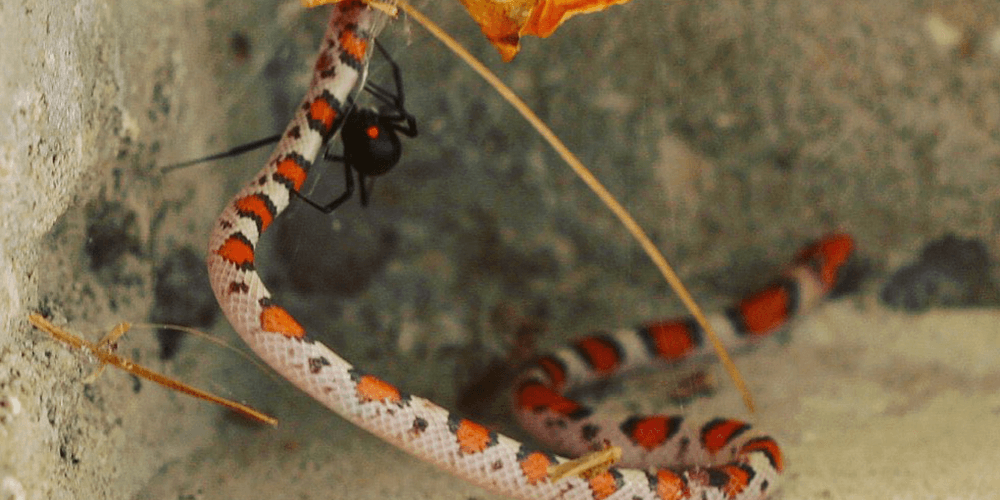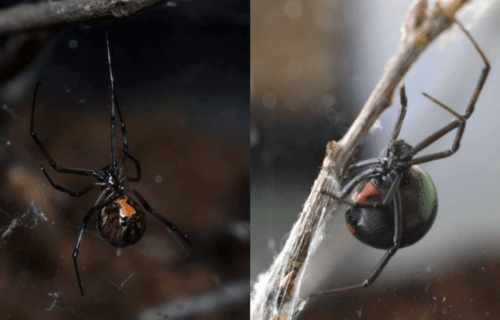ANNAPOLIS, Md. — Notorious black widow spiders may be on their way to extinction — thanks to their lesser-known cousins, a new study explains. Researchers in Florida say the equally venomous brown widow spiders are preying upon the black widows, reducing their numbers.
Although slightly smaller than the black widow, they are just as deadly. Lighter in color with stripes on their legs, scientists can identify brown widows by spiky looking eggs sacs.
“We have established brown widow behavior as being highly aggressive towards the southern black widows, yet much more tolerant of other spiders within the same family,” says Louis Coticchio, who led the study as part of his undergraduate research at USF.
A black widow’s bite is up to 15 times more potent than that of a rattlesnake. However, over the past couple decades, they have been disappearing from parts of the United States, with their close relatives growing in population — now outnumbering black widows 20 to one in some areas.
Black widow’s cousin almost always attacks them
Researchers once believed black widows were being outcompeted for food or habitat. Now, a more sinister reason has been identified. In experiments, pairing the creatures with brown widows in containers found they were 6.6 times more likely to kill southern black widows than other related species.
“I had a sneaking suspicion that Florida in particular provided plenty of food and habitat for both the brown and black widow, and that there was possibly some other area such as behavioral differences that were playing a role,” Coticchio continues.
“My observations in the field showed that brown widows appeared to be much more tolerant of other species outside of their genus, and so if resources were the main factor, then we should have seen the same behavior with other spiders competing for the same resources, but that did not seem to be that case.”
Computer simulations also show that black and brown widows are far more likely to die from predation than by starvation, ruling out chasing scarce resources. When young females of both species were placed together, the brown widows killed and consumed the black widows in 80 percent of cases.
In pairings of adults, black widows were killed in 40 percent of trials, and defensively killed brown widows in 30 percent of their interactions. Throughout the experiments, brown widow spiders regularly ventured into black widow webs, the researchers report. Red house spiders and triangulate cobweb spiders also showed such “bold” behavior, but black widows were never observed as aggressors.

“We didn’t expect to find such a dramatic and consistent difference in the personalities of the brown widow and the black widow,” says Deby Cassill, Ph.D., associate professor in the Department of Integrative Biology at USF.
“Brown widows are boldly aggressive and will immediately investigate a neighbor and attack if there is no resistance from the neighbor. For two bold spiders, the initial attack is often resolved by both individuals going to separate corners and eventually being OK with having a nearby neighbor. The black widows are extremely shy, counterattacking only to defend themselves against an aggressive spider.”
Are brown widows dangerous to people?
The brown widow was first discovered in downtown San Diego in 2003. Since then, it has multiplied exponentially and taken over the black widow’s habitat – from the coast to the inland valleys. Brown widows don’t have any known predators to interfere with their reproductive success. The invasive creature could have a negative impact on the ecosystem. The brown widow only injects about half the amount of venom as the black widow and is also less aggressive. The other good news for people is that brown widows tend to favor outside plastic patio furniture and aren’t found very often inside homes.
“They are very shy when harassed by humans or larger animals that are not considered prey,” Coticchio says. “They will run or roll up into a ball and play dead when being attacked or harassed by most other animals outside of their prey range.”
Brown widow venom causes less severe reactions to humans than black widows, and bites to people are very rare.
“One question I would love to answer is how brown widows interact with other species of spiders, more specifically black widows in Africa, where brown widows are believed to have originated,” Coticchio concludes.
“I would love to see if their behavior and displacement of black widows is something that they have adapted here in North America, or if this behavior is something they exhibit naturally even in areas where they have coevolved with black widows for much longer periods of time.”
The study is published in the Annals of the Entomological Society of America.
South West News Service writer Mark Waghorn contributed to this report.

